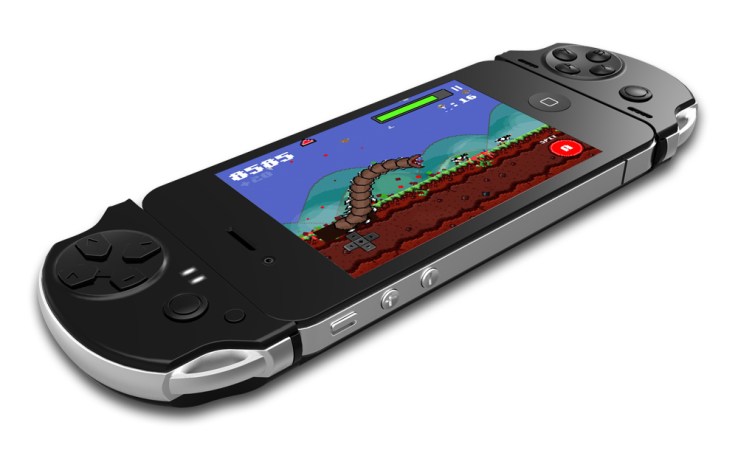
Apple has a new patent (via AppleInsider) that covers modular accessories for mobile devices like the iPhone, which include a physical gamepad with action buttons, D-pads and analog joysticks; a QWERTY hardware keyboard for typing; additional camera, speaker and microphone units; and even a full, secondary multitouch input like a trackpad. The accessories in the patent are described as using either hardware or Wi-Fi connections (i.e. Bluetooth) to talk to the main device.
The accessories described in the patent would make for a range of iPhone add-ons that turn it into a modular device with a range of potential uses. You can imagine how iOS devices might be able to better fit the needs of niche users with these kinds of add-ons, including not only gamers but also users in specific industries, as well as creative professionals and those looking for more comprehensive on-the-go audio recording solutions.
Some of the variations of the accessories even include provisions for adding on-board storage, multiple user profiles and video out capabilities. Ultimately, though, it’s very unlikely we’ll see these as first party products actually released by Apple for a couple of reasons. The first is that the original patent application dates from 2008, meaning Apple has had a lot of time to work on these designs and evaluate their ultimate usefulness.
The second is that many of the needs they address have already been tackled by things like increasing screen size, or by accessories made by Apple’s deep third-party accessory maker network, which is probably better able to tackle specific niches. Apple tends to only sell accessories when the potential market opportunity is massive, and will hand off more specific stuff to partners, as it has with its official game controller hardware support.
A first-party Typo-style keyboard accessory also just seems like something that Apple would never actually make, given their stance on touch-based input throughout the life of the iPhone and subsequent iOS devices.
Comments
Post a Comment